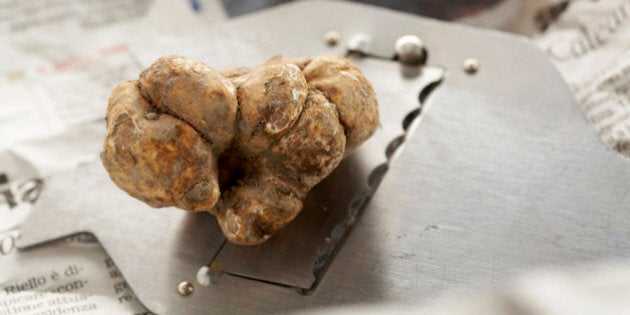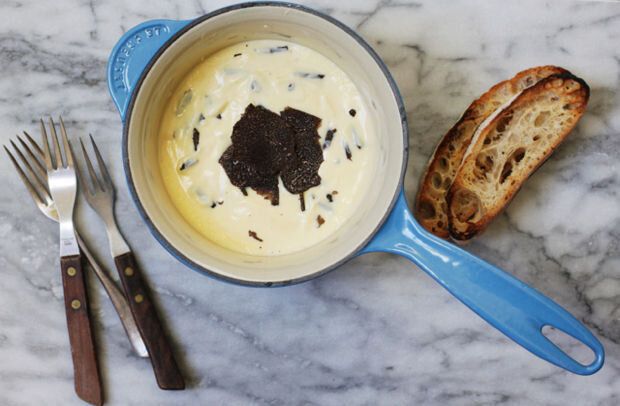
The final Sunday in September marks the start of the truffle season with the harvesting of the White Truffle, the Tuber magnatum Pico. The Central Apennines is a mountainous area in the middle of Italy, which is the heartland of truffle production -- both truffles grown and those hunted in the wild. In this part of Italy, each of the nine types of truffles that are indigenous, have their own 'Calendario della Raccolta'. This means each truffle has a legally recognized time for harvesting.
Now people are counting the days in anticipation. The Tuber magnatum is the most valuable truffle because it has a distinctly alluring perfume and although its taste is delicate it fulfils the quintessential sensation we expect of a 'truffle'. Due to the high price it commands, secrecy abounds. However, it is known that Italy produced 12 tonnes of Tuber magnatum for sale in 2007, and when it reaches the fashionable restaurants of Toronto, London and New York, this truffle, at times, can cost as much as buying gold.
Few people -- including Italians -- realize that the main area for White Truffle (Tuber magnatum) production is now in the Apennines of Abruzzo, and Umbria, with some production in the Marche side of the mountains. For historic reasons this truffle remains associated with Northern Italy, in particular with Piedmont. Yet by comparison production levels in the north are much less.
Although truffle cultivation started in this mountainous area in the 1930s, the boom began in the 1980s as a result of scientific research . From this time onward the Black Truffle (Tuber melanosporum) has been a success story, while the White Truffle (Tuber magnatum) has largely failed to be understood. It has not produced as planned. Studies done by the Regione Umbria (Bencivenga, Falini, 2012) have identified the main problems remain the mycorrhization of the plants -- which is the impregnating of the host tree with the required spores to produce the truffles -- and the environmental conditions. The White Truffle is hyper sensitive to everything in its environment, and some elements like weather are outside of our control. In the Perugia area they found the white truffle would not tolerate heat above 20 degrees Celsius, nor cold below seven or eight degrees.
With climate warming more areas will become suitable for White Truffle cultivation and new advances in molecular analysis may soon eradicate problems connected with the quality of the plants.
Look out for these precious delicacies in Italian restaurants soon. Beware, however, of sauces and oils, as almost all of these products are made from chemical derivatives, like bismetiltiomethane, and or dimethyl sulphide. The word to watch for is 'aroma.' Typically truffle sauces contain three to six per cent truffles and the only truffle smell or taste is a chemical one.
The White Truffle is delicate and can only be eaten raw and fresh.
You want to see these jewels freshly sliced onto your plate, beneath your nose with any luck. Any restaurant that has made the effort to purchase truffles fresh, will be proud to show you the goods...
ALSO ON HUFFPOST:
